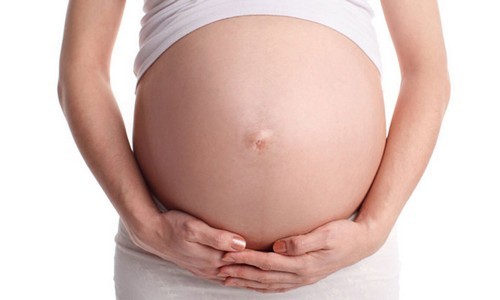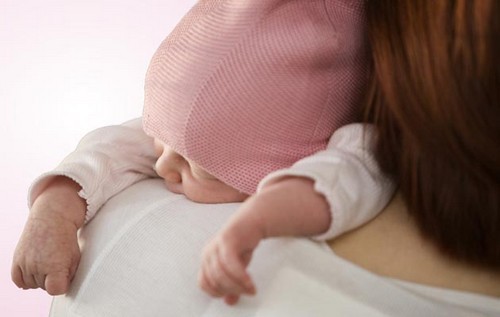Towards the end of pregnancy, the expectant mother begins active preparation for childbirth. She carefully monitors all changes in the body. The most important and reliable sign that the birth is very close is the omission of the abdomen.
The date of birth set by the obstetrician may not always coincide with the exact date in reality.
And therefore, a pregnant woman must know about the precursors of childbirth that occur several weeks or hours before the birth, in order to be prepared for this important event.
Therefore, very often women worry and ask such questions:
- Is it not too early for their stomach to go down?
- Why didn’t the stomach fall?
- How many days before birth will the abdomen drop?
Why belly goes down
When a woman becomes pregnant, the uterus gradually changes the position of the internal organs in the abdominal cavity. This is due to the fact that the uterus is constantly stretched and supports them. Difficulty breathing, increased pressure on the lungs.
Therefore, the situation when the pregnant woman’s stomach is under the ribs, and she is tormented by heartburn, is a normal condition in this case.
But already closer to the end of the third trimester of pregnancy (from about 33-34 weeks), the stomach begins to sink. Abdominal tension decreases and uterine prolapse occurs.
This suggests that the fetus occupies a certain position before childbirth, which is called presentation. Presentation of the fetus can be pelvic or head. Normally, the fetus itself takes its head down when it enters the pelvic area.

Signs
When the stomach fell, the woman notices that it has become easy to breathe. Digestion is being established, the appetite may return to the expectant mother.
In order to notice the prolapse of the abdomen, you must periodically observe yourself in the mirror. If earlier the abdomen started from the chest itself, now now you can put one palm between the stomach and chest. The bottom of the uterus drops by 2 cm. Urge to the toilet is becoming more frequent. Sometimes urinary incontinence may occur during laughter or sneezing. In connection with painful sensations in the pelvic and pubic areas, a woman has a “duck gait”. Drawing pains appear in the lower abdomen. This is due to fetal pressure and sprain.
When the belly goes down
Although there are no particular differences in the signs of the imminent onset of labor between the multiparous and the primiparous, they can proceed in different ways. In multiparous mothers, these signs can be more pronounced and rapid.
In primiparous, the stomach may fall already from the middle of the third trimester. This happens about 2 weeks before delivery. More often, closer to week 36. There are times when the abdomen lowered just two days before giving birth. Therefore, the omission of the abdomen can not always talk about the approach of delivery.
In a multiparous woman, unlike primiparous, the abdomen drops only a few days before giving birth. A protrusion appears in the navel. The fetal head may remain movable.
It is worth paying attention that in some individual cases, prolapse of the abdomen may not occur. In this case, it is necessary to focus on other signs, indicating that childbirth is very close.
After the stomach has lowered, childbirth can begin at any time.
False contractions
After the stomach has lowered (a couple of weeks before the birth), the future mother has training contractions, or in another way the contractions of the Brexton Hicks. As you approach the birth, such contractions will increase more and more. Thus, the body prepares for childbirth. False contractions are painless and do not pose a threat to the fetus.
They are short-term uterine contractions lasting no more than two minutes. The stomach is as if stony, it becomes tense, then everything passes. Only when the time is right to give birth, training contractions can become more sensitive and cause discomfort to the expectant mother.
Mucus plug
In addition to drooping the abdomen before childbirth, there are other reliable signs that indicate that a woman will soon give birth.
Some time after the belly has lowered, the future mother may have a mucous plug. In primiparas, this can happen a few weeks before birth. In multiparous mothers, the mucous plug may go away a few hours before giving birth.
But sometimes it can be that the mucous plug leaves only during childbirth or together with amniotic fluid. Read more about how the cork leaves before childbirth →
Amniotic fluid
In the multiparous, amniotic fluid may suddenly drain when the fetal bladder bursts and the water flows out. Sometimes the water leaves gradually.
Most often, the amniotic fluid leaves with the appearance of contractions. If the fetal bladder remains intact, then it is pierced directly during childbirth. This often happens in primiparous women. If the fetal bladder burst, but contractions have not yet appeared, then you should immediately go to the maternity ward.
Fetus
If a woman gives birth soon, the baby becomes less active. Movement of the fetus becomes more rare or it subsides completely. He occupies one position until the very birth, and his head is located in the pelvic area. Therefore, a pregnant woman often feels pain while walking or it becomes difficult for her to sit.
Other precursors of childbirth
Also one of the harbingers of childbirth is the instinct of nesting. The expectant mother begins to clean the house, rearrange, or simply shows vigorous activity.

Frequent trips to the toilet, caused by upset stools, or false desires for emptying can speak of giving birth soon. Vomiting or nausea may also occur, which is sometimes taken by pregnant women for poisoning. This means that in the very near future (day) a woman should give birth.
Immediately before birth (for 2 or 3 days), slight weight loss may be observed. Edema also comes down. In the perineum, pressure arises. Drawing pains appear in the lumbar region.



